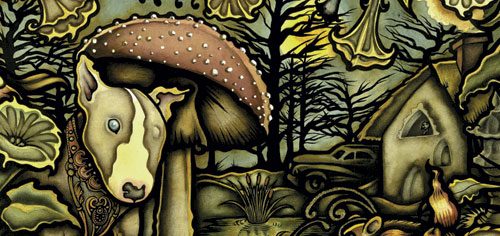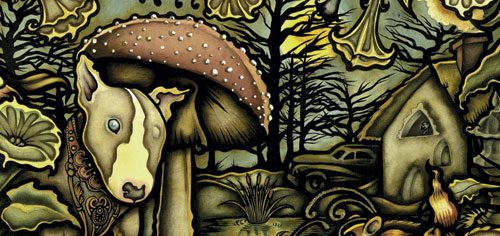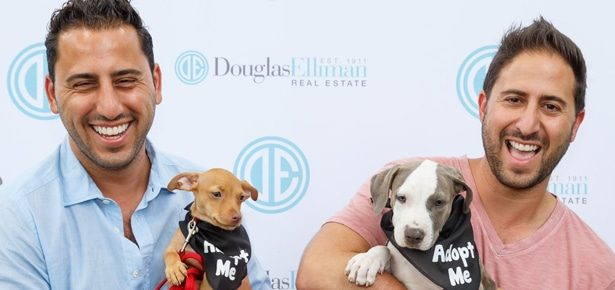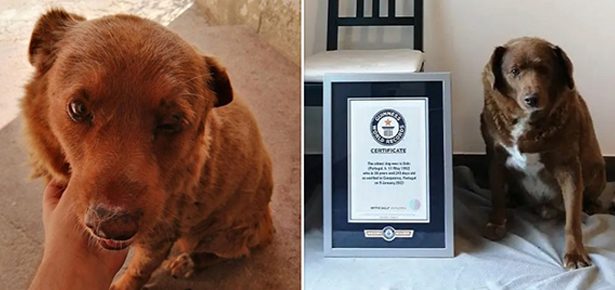

Estate Planning For Your Dog
Who would take care for your dog if you could not?
One day a posting came into one of the canine rescue listservers I belong to. "Senior Bullmastiff mix. Kennel aggression. Must go or will be PTS [put to sleep]."
"Oh man," I thought. "This poor old gal. Nobody is going to want her." Feeling that the dog stood little hope of being adopted and would likely die in the shelter, I responded.
When I saw her my first thought was, "What an ugly old gal!" Thirteen-and a half years old, Jessie didn’t look like a Bullmastiff as much as a clunky old German Shepherd mix, and she had great, hanging udders that seemed full of milk. But despite her appearance, there was something endearing about her.
However something seemed wrong, too. "This isn’t right," I said to my husband, Jim, staring at her swollen mammary glands. "Will you take her to the vet?"
I found out about Jessie’s story. One year earlier, her owner had become unable to care for her because of debilitating diabetes. He gave her to friends. They put her out in the yard and, presumably, broke her heart. With little human contact she barked. And barked. And barked. The "friends" then placed Jessie in a shelter, unable to control her barking and unwilling to let her be a part of their family. At the shelter she continued to bark. By this time her bark included flying spit and sideways glances. No trust, perhaps. Desperate loneliness, for sure.
When Jim brought Jessie home from the vet the next day, he told me that she had cancer. "Well," I said, "she’s our dog now," and Jim understood.
Our other dogs immediately accepted Jessie. We bought her a big pillow and placed it next to the kitchen table. That became her spot and she would lie there whether a pillow was there or not.
It was early springtime. We hoped that she would make it until summer. We wanted her to sit under the apple trees while we worked in our gardens, to hear the sounds of summer and to enjoy the sun’s warmth one last time.
Jessie quickly became a member of our family. Our daughter would snuggle with her and tell her that she loved her. We gave her treats and took her on car rides. She adored Jim and would follow him everywhere she could. We informed the releasing shelter of her diagnosis, and asked that they inform the original owner and also let him know that Jessie would spend her final days with us. He was heartbroken, but thankful.
Within just a few days Jessie began to labour. The vet gave us medication to help her cope, but the cancer was winning more quickly than we had imagined. We comforted her as much as we could. Nine days after we took her in, I asked Jim to pose for some photos with her. The very next day we were at friends’ for Sunday dinner and when we arrived home, she had passed on. The few photos from the day before are the only ones we have of her.
"Good girl," we told her. We all cried. She was our dog for only ten days, but we all loved her. The following day Jim buried her by our big Red Delicious apple tree. We planted a flower garden there with roses, trailing sapphires, hollyhocks and pansies.
Although sad, Jessie’s story does have a happier ending than it could have. She passed in love and not on a shelter floor. She died in a true home.
What happens to a dog when her owner becomes unable to care for her? If friends, family or rescuers don’t step in and take responsibility for the dog’s care, a shelter is often the only alternative. And if the dog is not especially young or attractive or happens to have a hard time adjusting to the new environment, the "solution" is often what Jessie’s would have been: PTS.
Right around that time, my friend Kitty called to ask if Jim and I would become godparents to her two champion Rhodesian Ridgebacks. She then told me about estate planning for canine companions. This protects them from ending up with family members who may not really want them- or worse, neglected in a shelter.
For many dog owners, the decision about what to do with canine companions in the event of illness or death comes too late. Relying on strangers or hoping that family will know to do the right thing is sometimes, sadly, not enough.
There are many online resources for creating a will. People can talk to their lawyers or estate planners about how to create a plan that includes care for dependent canines. Estate funds can be set aside for the dogs’ care, and custodians (consenting ones, of course) will be undisputed.
Creating a trust for your dog can be as simple as earmarking a portion of your will for custodians/godparents. However some pet owners elect to leave their entire home as well as a trust to the custodian for the time that the pet is living. Once the pet has passed, the home then reverts to the named beneficiary, such as a family member.
My family and I were able to enjoy Jessie and to give her much comfort during her final days. We are now entrusted with the potential care of two champion dogs. It is a testament to what enduring friendships are all about. But it is also matter of making loving choices for the long-term care of the pets who love and depend on us.
For more information on creating a trust for your dog, talk to your lawyer or estate planner. ■
Barbara McClarty, based in Langley, B.C., breeds and shows champion Rhodesian Ridgebacks. A third-generation breeder at Of Course kennels, widely known for its Whippets, Barb has ten years’ communications and public relations experience. Her writing has appeared in a variety of popular and trade publications distributed throughout the U.S. and Canada.
Join the newsletter and never miss out on dog content again!
"*" indicates required fields
By clicking the arrow, you agree to our web Terms of Use and Privacy & Cookie Policy. Easy unsubscribe links are provided in every email.





